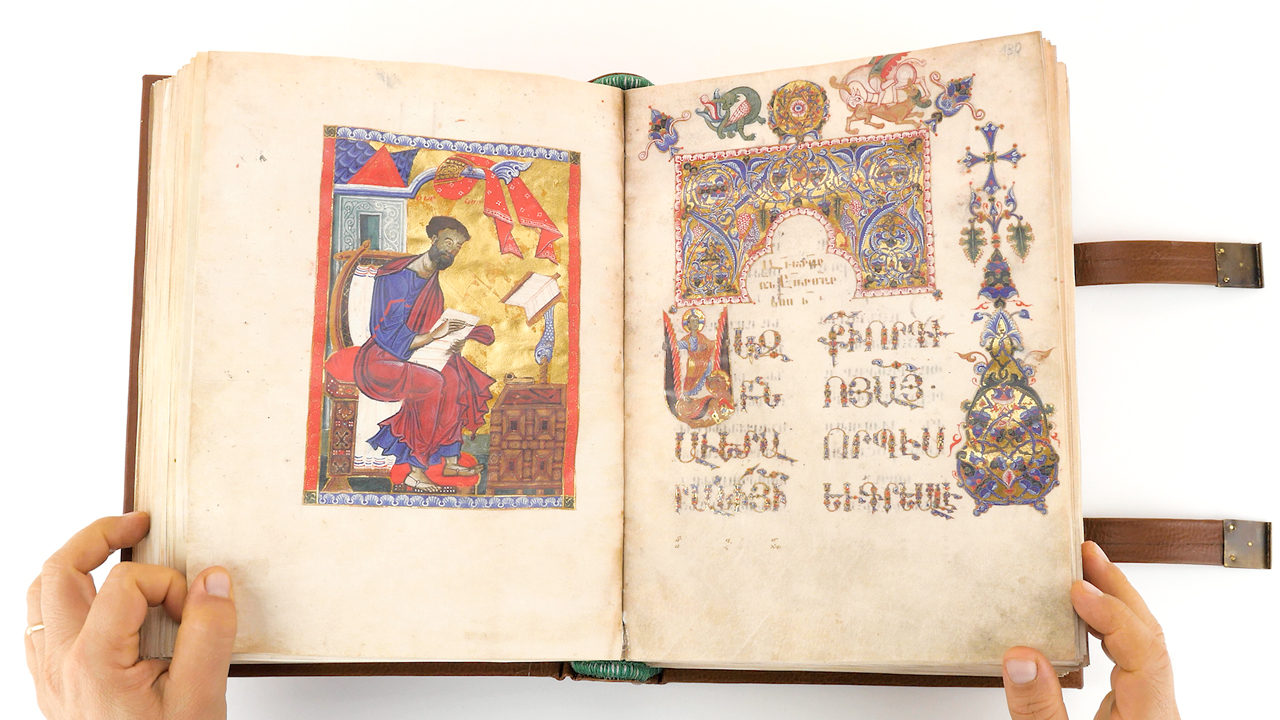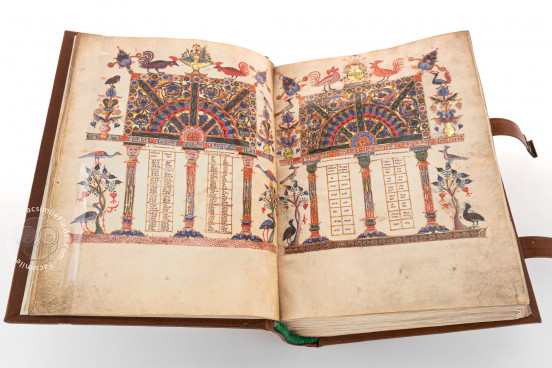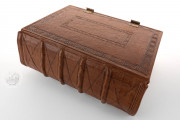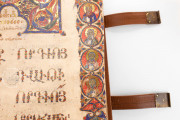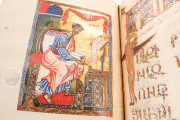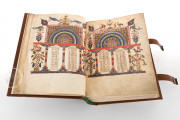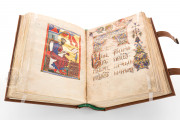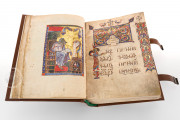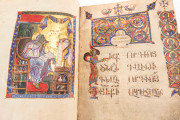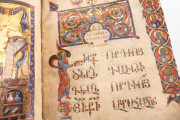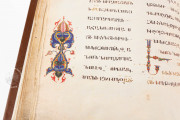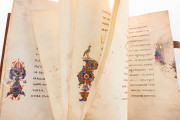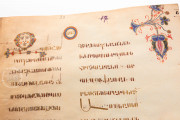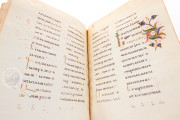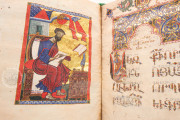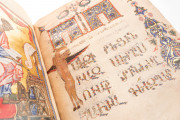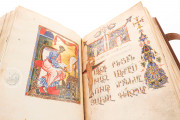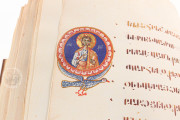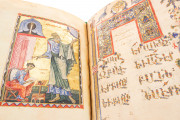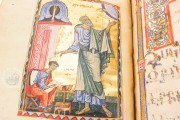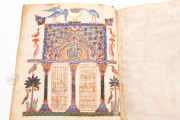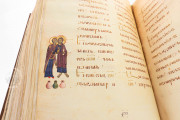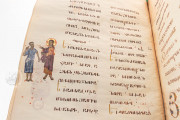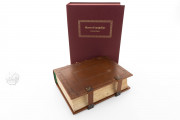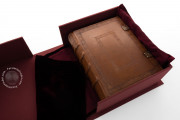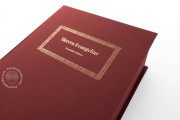The Lemberg Gospels—also known as the Lviv Gospels—is a dazzling illuminated manuscript of the Gospel accounts of the life of Christ attributed to Saints Matthew, Mark, Luke, and John. A priest named Grigor wrote and illuminated the manuscript in Cilicia between 1193 and 1198, beginning his work at Mlidj (Milc) and completing it at the monastery of Skevra, both locations associated with the rulers of Armenian Cilicia. The book features four full-page evangelist portraits, twenty-seven marginal vignettes, and a wealth of painted ornament.
The biblical text is preceded by illuminated canon tables—columns of numbers that indicate the concordance of passages among the Gospels. These, in turn, are preceded by an elaborately decorated text that explains their use by the fourth-century historian and biblical commentator Eusebius of Caesaria.
A Treasure from Cilicia
The Gospels's abundance of shimmering gold, inventive ornamental motifs, charming birds, and pithy narratives are facets of an artistic idiom that was perfected in medieval Cilicia (Lesser Armenia). The manuscript's decoration is closely related to that of another Gospel book, also associated with Skevra (Venice, Biblioteca del Monastero Mechitarista di San Lazzaro degli Armeni, MS 1635).
Grigor Paints the Gospel-Writers
The manuscript's scribe-illuminator, Grigor, individualizes the subjects of his evangelist portraits. The writers are shown against backgrounds of gold leaf, lending a spiritual quality. Still, each is differently engaged in the creation of his Gospel: Matthew ponders what to write, Mark actively writes, Luke dips his quill into a pot of ink, and John dictates his text to his amanuensis, Prochoros (fols. 11v, 129v, 206v, and 326v).
Fanciful Painted Architecture
A great delight of the Lemberg Gospels is the suite of decorated canon table pages, of which seven survive. The painted architectural surrounds of facing pairs of pages have similar columns and capitals, creating harmony across the opening (fols. 5v-6r, 7v-8r, 9v-10r). A great variety of lively birds—herons, guinea fowl, chickens, and peacocks—cavort above the attics and at the sides of the painted architecture.
Elegant Presentation
Grigor wrote the main text in Armenian Majuscule in two columns, leaving generous margins that serve as host to decorative motifs, portrait busts, and narrative scenes. The decorated initials feature delicate, ornamental motifs of stylized flowers and leaves, with an occasional human face, in a palette dominated by gold and brilliant blue.
High Court Circles
We know that the manuscript was made at the behest of one Stephanos. It has been suggested that he was in the court circle of the Rubenid dynasty of princes and kings of Cilicia. The inclusion of a heading in Greek (language and script) at the beginning of Matthew's Gospel points to such a lofty association (fol. 12r).
A Well-Traveled Book
Inscriptions in the manuscript attest to three early modern owners: a certain Simeon sold the book to Chutlupek in 1422, and T'oros Bernatenc had the manuscript "restored" and rebound in 1592. It was held by the Armenian Bishopric of Lviv (German: Lemberg) and the Uniate Armenian Archbishopric of Lviv before being transferred to the Benedictine monastery of Tyniec in 1945.
In 1985, the manuscript came into the possession of Józef Glemp (1981–2009), a Catholic cardinal and primate of Poland, who placed it in the Archiwum Archidiecezjalne Gniezo. It entered the collection of the national library of Poland in 2006. The current binding of red silk over wood boards, featuring gilt silver furnishings, incorporates elements from the sixteenth- and eighteenth-century bindings.
We have 1 facsimile edition of the manuscript "Lemberg Gospels": Skevra Evangeliar facsimile edition, published by Bernardinum Wydawnictwo, 2008-2019
Request Info / Price
